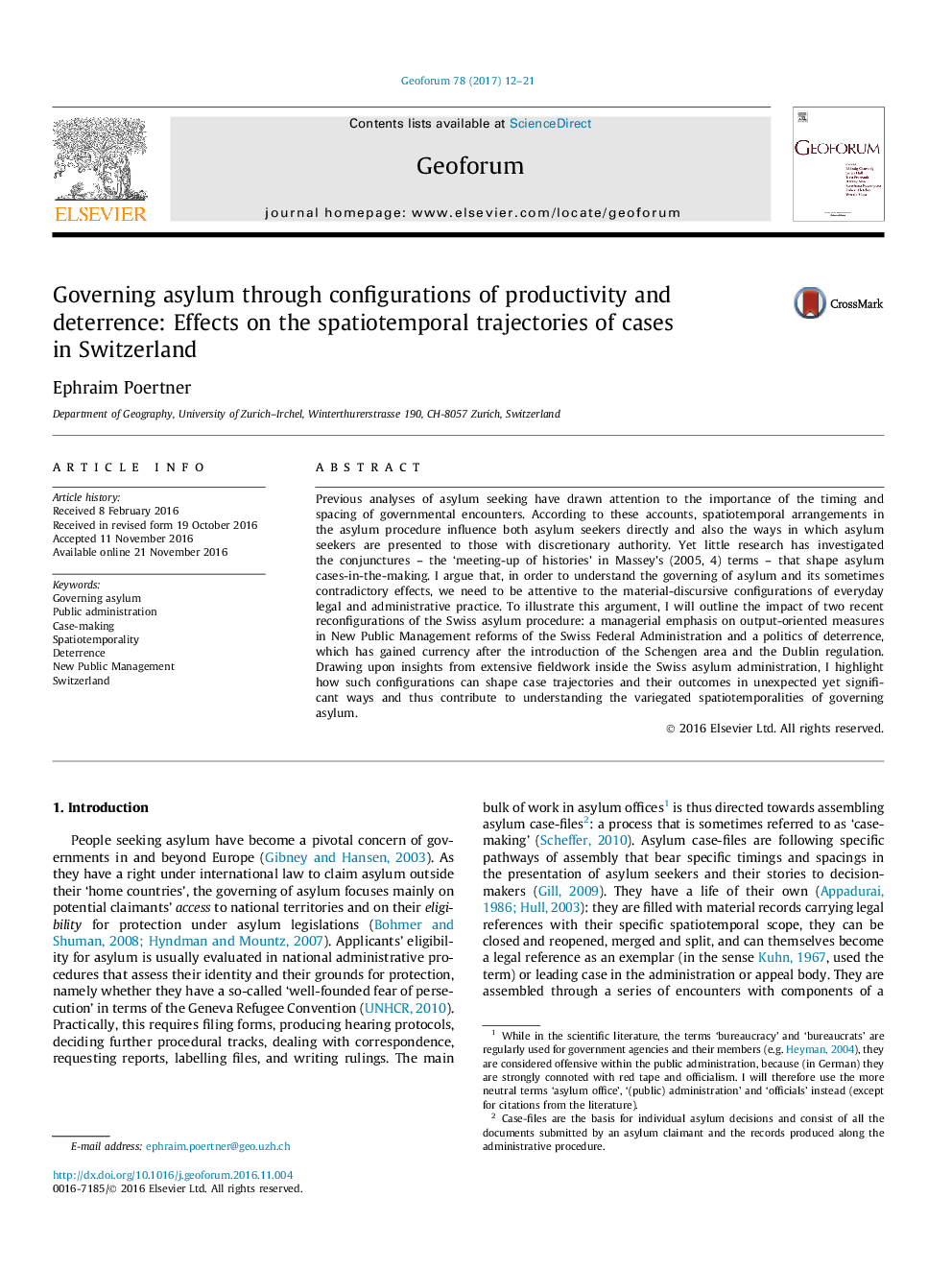| Article ID | Journal | Published Year | Pages | File Type |
|---|---|---|---|---|
| 5073485 | Geoforum | 2017 | 10 Pages |
Previous analyses of asylum seeking have drawn attention to the importance of the timing and spacing of governmental encounters. According to these accounts, spatiotemporal arrangements in the asylum procedure influence both asylum seekers directly and also the ways in which asylum seekers are presented to those with discretionary authority. Yet little research has investigated the conjunctures - the 'meeting-up of histories' in Massey's (2005, 4) terms - that shape asylum cases-in-the-making. I argue that, in order to understand the governing of asylum and its sometimes contradictory effects, we need to be attentive to the material-discursive configurations of everyday legal and administrative practice. To illustrate this argument, I will outline the impact of two recent reconfigurations of the Swiss asylum procedure: a managerial emphasis on output-oriented measures in New Public Management reforms of the Swiss Federal Administration and a politics of deterrence, which has gained currency after the introduction of the Schengen area and the Dublin regulation. Drawing upon insights from extensive fieldwork inside the Swiss asylum administration, I highlight how such configurations can shape case trajectories and their outcomes in unexpected yet significant ways and thus contribute to understanding the variegated spatiotemporalities of governing asylum.
